Step into the world of Scandinavian design, where elegance meets functionality in the most harmonious way. Whether you’re just beginning your journey in home decoration or you’re a seasoned designer seeking fresh inspiration, Scandinavian design offers a treasure trove of ideas that combine beauty with practicality. Its simplicity and clean lines create a calming environment that speaks to the soul, making it a beloved choice for those who value both aesthetics and comfort in their living spaces.
In this article, we will explore 14 elegant and chic Scandinavian home designs that capture this unique style’s essence. You’ll discover how to transform your home into a serene sanctuary with thoughtful design choices that emphasize natural light, minimalist decor, and a neutral palette. Each design featured here serves as a testament to the Scandinavian philosophy of creating spaces that are as inviting as they are functional. Our selection aims to inspire and guide you, whether you’re making small changes or undertaking a complete home makeover.
Prepare to be inspired by the artful use of space, texture, and color that characterize Scandinavian interiors. We’ll delve into the key elements that define this style, offering practical tips for implementing them in your own home. From choosing the right furnishings to mastering the art of hygge, you will gain the insights needed to create a space that’s both stylish and welcoming. By the end of this article, you’ll not only appreciate the timeless appeal of Scandinavian design but also feel equipped to incorporate its principles into your own home effortlessly.
Embracing Minimalist Aesthetic
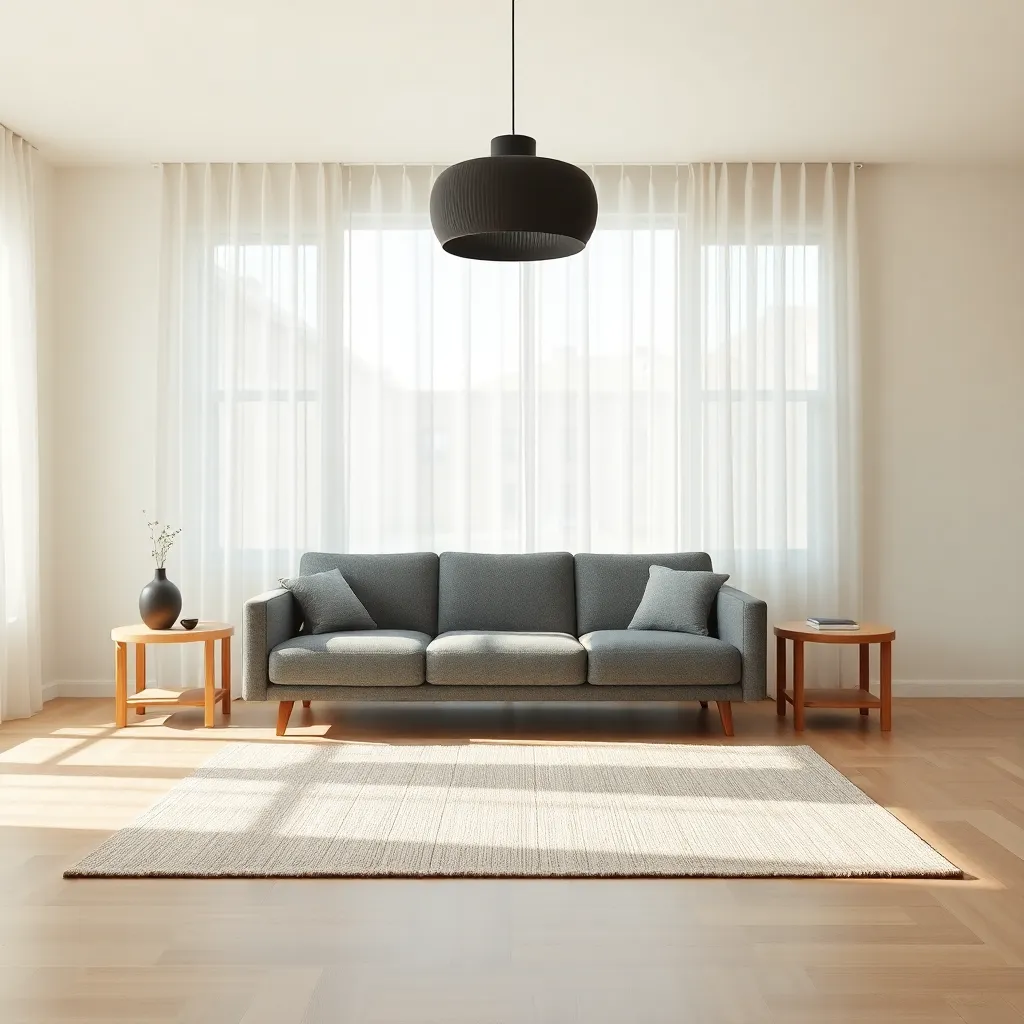
A minimalist aesthetic can transform your home into a tranquil sanctuary by focusing on simplicity and functionality. Begin by choosing a neutral color palette, such as whites, grays, and beiges, to create a serene and uncluttered environment.
When selecting furniture, opt for pieces with clean lines and understated designs to maintain the minimalist theme. Consider investing in multifunctional furniture, like a sofa bed or a coffee table with storage, to maximize space and reduce clutter.
Incorporate natural materials such as wood and stone to add warmth and texture without overwhelming the space. For example, a light oak dining table paired with stoneware accessories can create a harmonious balance between simplicity and style.
To enhance the minimalist aesthetic, focus on strategic placement and lighting. Place furniture in a way that promotes easy movement and flow, ensuring that the room feels open and inviting.
Choosing Neutral Color Palettes

Neutral color palettes are a hallmark of Scandinavian design, offering a serene and versatile backdrop for any home. To start, consider using shades like soft whites, muted grays, and gentle beiges to create a calm and inviting atmosphere.
When choosing furniture, opt for pieces in natural materials such as light woods and woven fibers, which complement neutral tones beautifully. Incorporate these materials through items like a blonde wood dining table or a woven rattan chair to maintain a cohesive look.
Layering textures is key to adding depth and interest to a neutral palette. You can achieve this by mixing knit throws, linen cushions, and wool rugs in varying shades of gray and cream.
For a more advanced approach, consider adding subtle color accents that harmonize with your neutral base. Hints of sage green or powder blue can enliven the space without overpowering the overall serene ambiance. Use these accents sparingly through decorative elements such as vases, artwork, or a single statement chair.
Incorporating Natural Light Sources
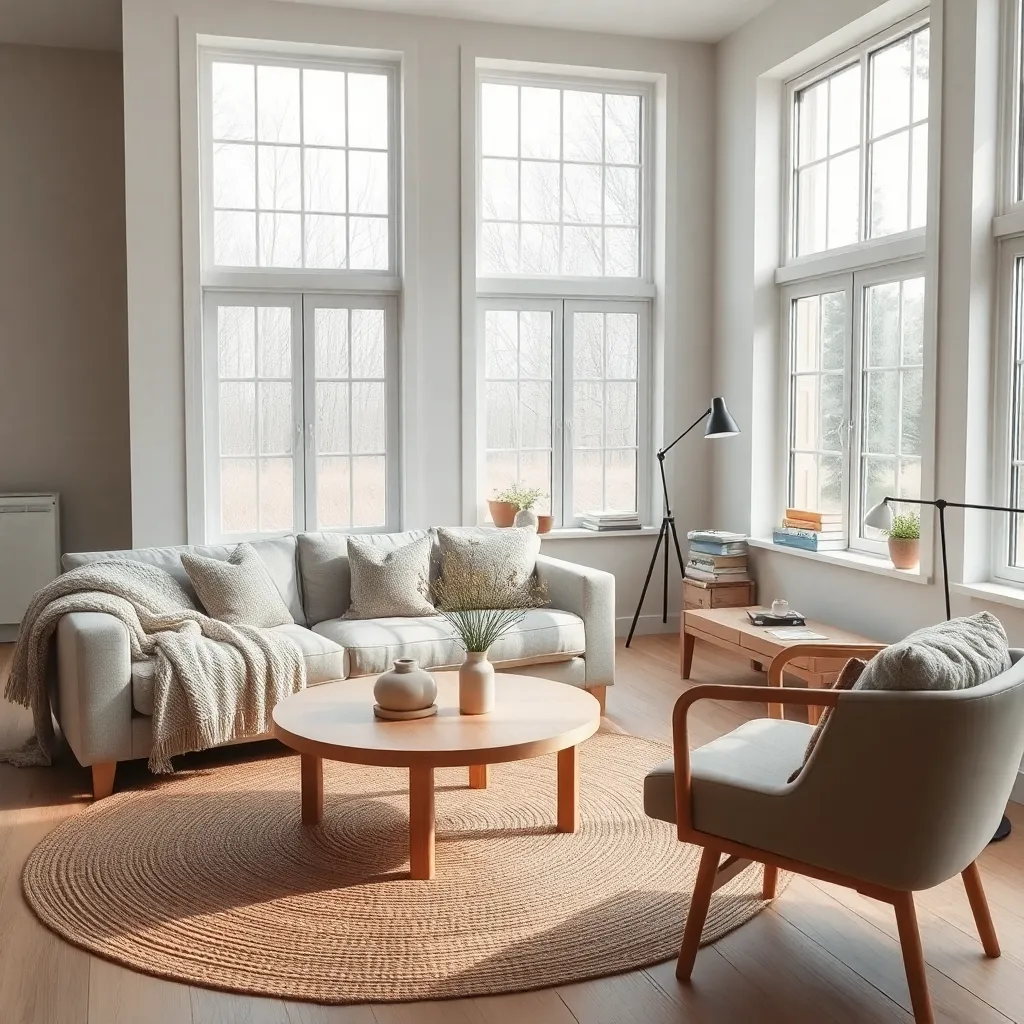
Maximizing natural light is a cornerstone of Scandinavian design, enhancing the sense of space and airiness. Begin by choosing sheer, light-colored window treatments that allow sunlight to flood the room while maintaining privacy.
To further amplify natural light, position mirrors strategically across from windows. Mirrors not only reflect light but also create the illusion of a larger space, which is essential in maintaining the sleek, uncluttered aesthetic of Scandinavian interiors.
Furniture selection plays a crucial role in maximizing natural light. Opt for pieces with light-colored woods like birch or pine, and select designs with open legs to avoid blocking light flow.
For a more advanced touch, consider painting window frames in soft, muted colors that complement your neutral palette. This subtle contrast can highlight the influx of natural light and add depth to your design without overwhelming the space.
Opting for Functional Furniture
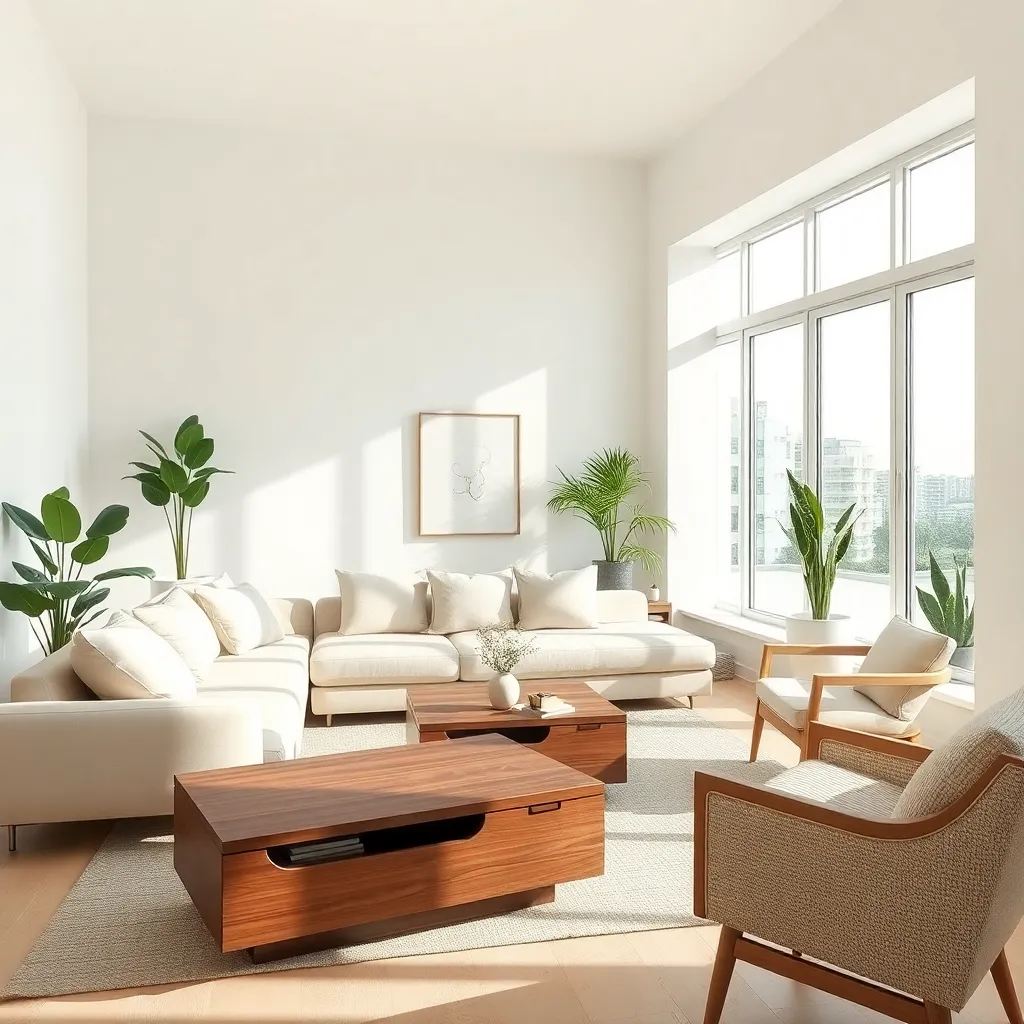
When opting for functional furniture in a Scandinavian home, think minimalist yet versatile pieces. A sleek, extendable oak dining table, for example, can adapt to both intimate dinners and larger gatherings, exemplifying the Nordic emphasis on efficiency and adaptability.
Consider incorporating furniture with hidden storage solutions to maximize space without compromising style. A modern sofa bed with under-seat storage can provide both comfort and practicality, allowing rooms to serve multiple purposes seamlessly.
Color choice plays a vital role in enhancing the functionality of your furniture. Opt for neutral hues like white, grey, and soft pastels, which are staples in Scandinavian design, to create a cohesive and calming atmosphere that amplifies the functionality of each piece.
Placement is key in ensuring your furniture serves its purpose effectively. Positioning a multi-functional coffee table centrally in your living area not only anchors the space but also makes it accessible from all seating positions, enhancing both utility and aesthetic appeal.
Highlighting Organic Materials
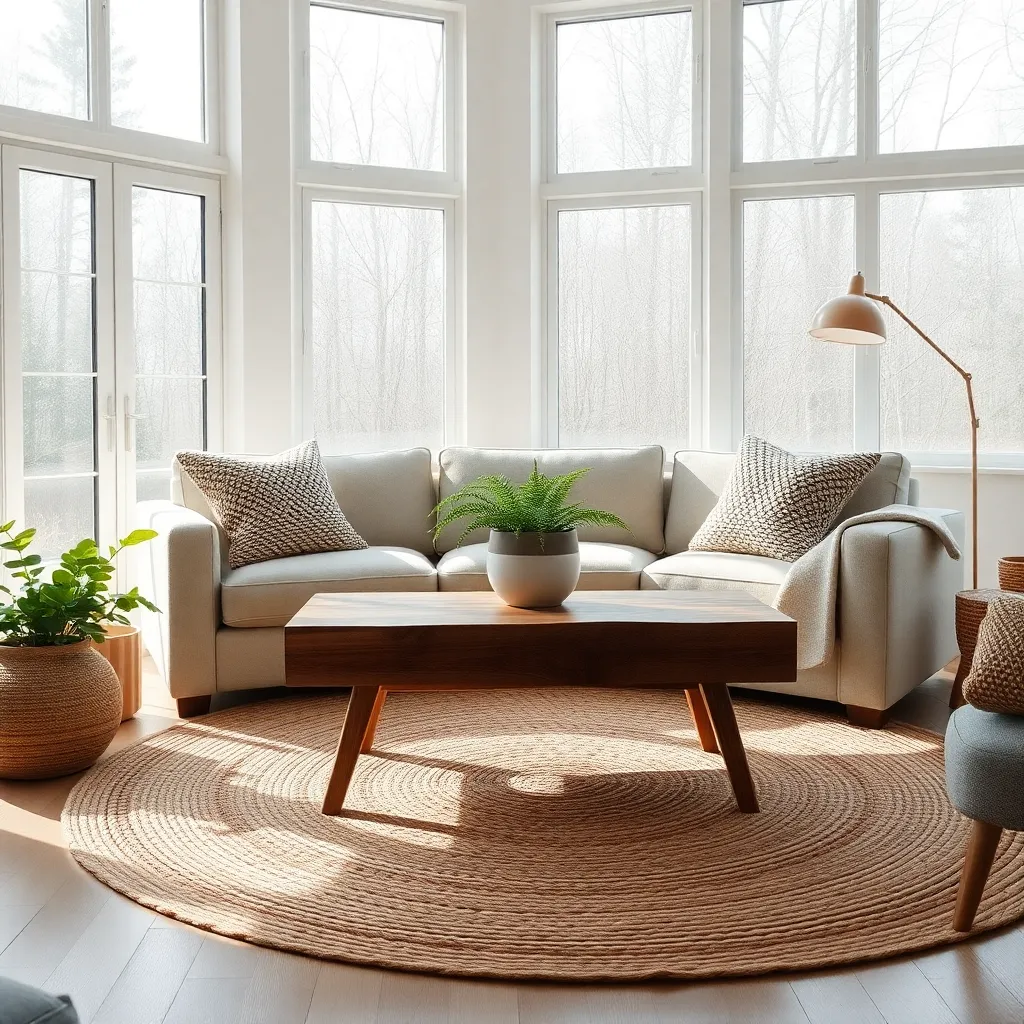
Incorporating organic materials into your Scandinavian home design can create a warm and inviting atmosphere. To start, consider using wooden elements such as oak or pine for furniture and flooring to enhance the natural feel of your space.
Adding textures through natural fibers can elevate the cozy aesthetic typical of Scandinavian styles. Opt for wool or cotton textiles in your rugs, throws, and cushions to introduce both comfort and visual interest.
For advanced decorators, mixing different organic materials can lead to a sophisticated yet harmonious design. Pairing leather accents with wooden furniture can add an elegant touch, while still maintaining the minimalist ethos of Scandinavian interiors.
When selecting color schemes, stay within a neutral palette to allow the materials’ natural beauty to shine. Shades of beige, soft gray, and muted greens can complement organic materials beautifully, creating a serene and cohesive environment.
Utilizing Textured Fabrics
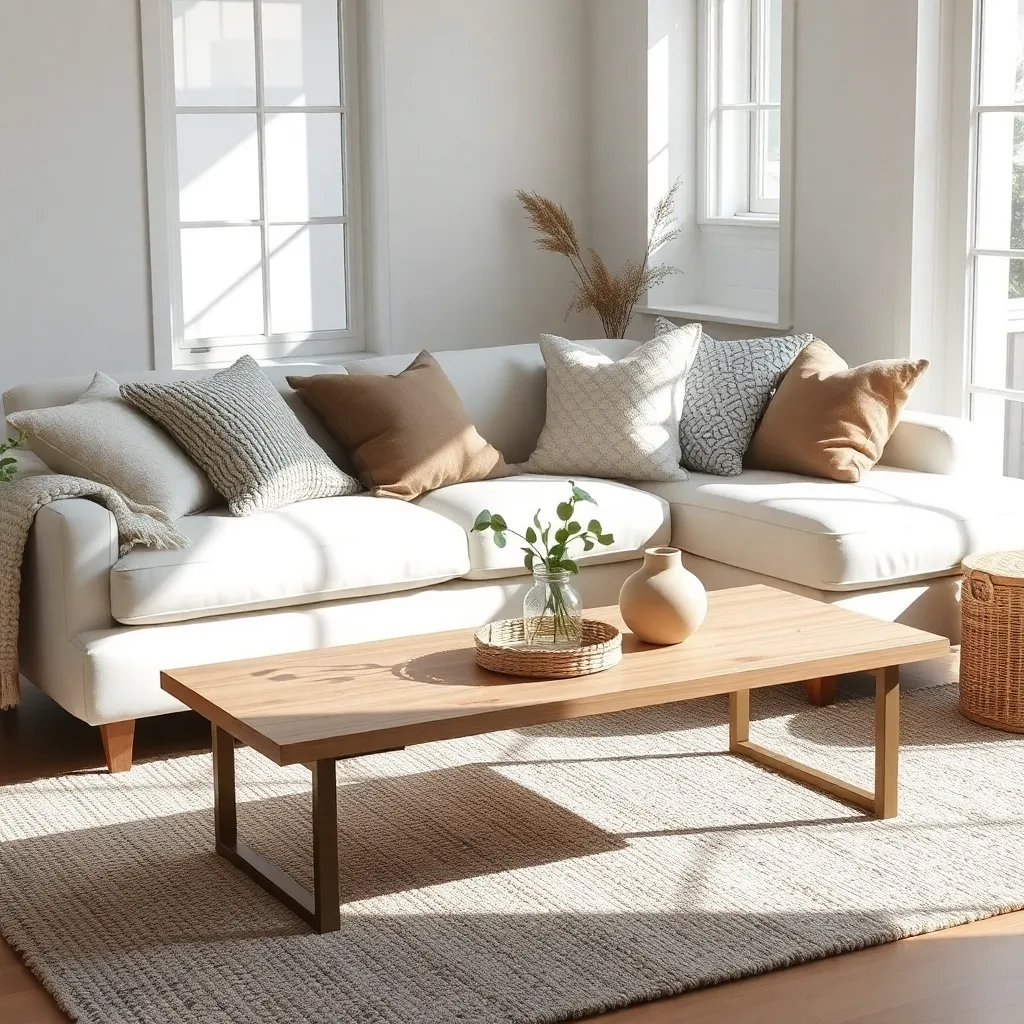
Incorporating textured fabrics into your Scandinavian home design can add depth and warmth, creating a cozy yet elegant atmosphere. Consider using materials like wool, linen, and cotton in your furniture and decor to enhance the tactile experience of the space.
For beginners, start by introducing textured throw pillows or blankets in neutral tones to your sofa or bed, which can instantly elevate the look without overwhelming the space. Advanced decorators might explore layering different textures, such as pairing a soft, plush rug with a sleek leather chair to create a dynamic contrast.
Placement is key when utilizing textured fabrics; aim to balance rough and smooth textures throughout the room to maintain visual harmony. For a sophisticated touch, place a knitted pouf or a woven basket next to a minimalist coffee table, ensuring that each element complements rather than competes.
Neutral color schemes work well with textured fabrics, allowing the textures themselves to become the focal point. To create a layered look, mix various shades of white, gray, and beige; this subtle approach will let the intricate detailing of the fabrics shine through.
Integrating Clean Lines and Shapes
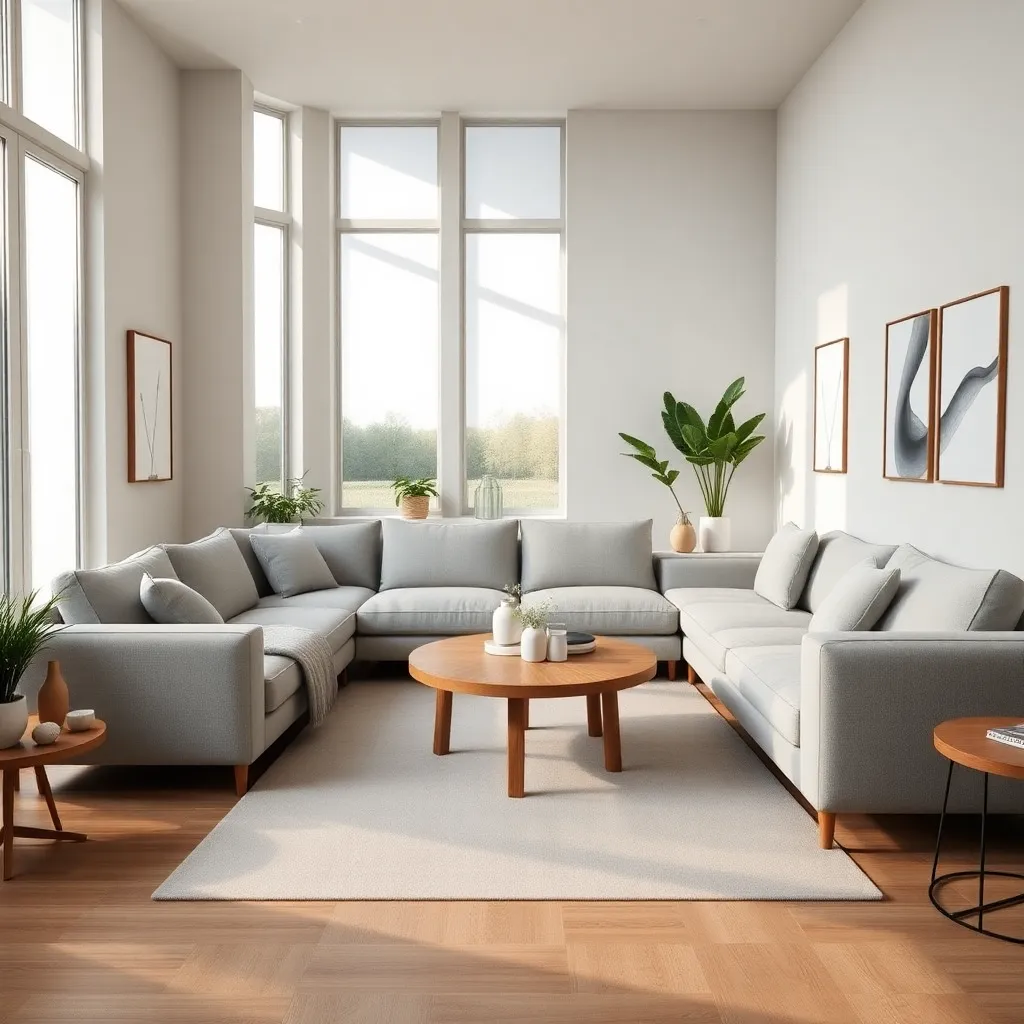
Incorporating clean lines and shapes into your Scandinavian home design establishes both simplicity and elegance. Start by selecting furniture pieces with a minimalist aesthetic, such as a rectangular dining table with slim legs or a streamlined sofa without ornate details.
Opt for a color palette that enhances the clean lines, like using soft whites, muted grays, and natural wood tones. These colors not only reflect light but also contribute to a calming and clutter-free environment, which is a hallmark of Scandinavian design.
When arranging furniture, maintain a sense of order and openness by allowing space between pieces. This approach emphasizes the clean lines and prevents rooms from feeling cramped, enhancing the overall spaciousness of your home.
Advanced decorators can experiment with shapes by integrating geometric patterns through accessories like rugs, cushions, or artwork. Choose items that reinforce the room’s linear design, adding visual interest without overwhelming the space.
Adding Pops of Pastel Hues
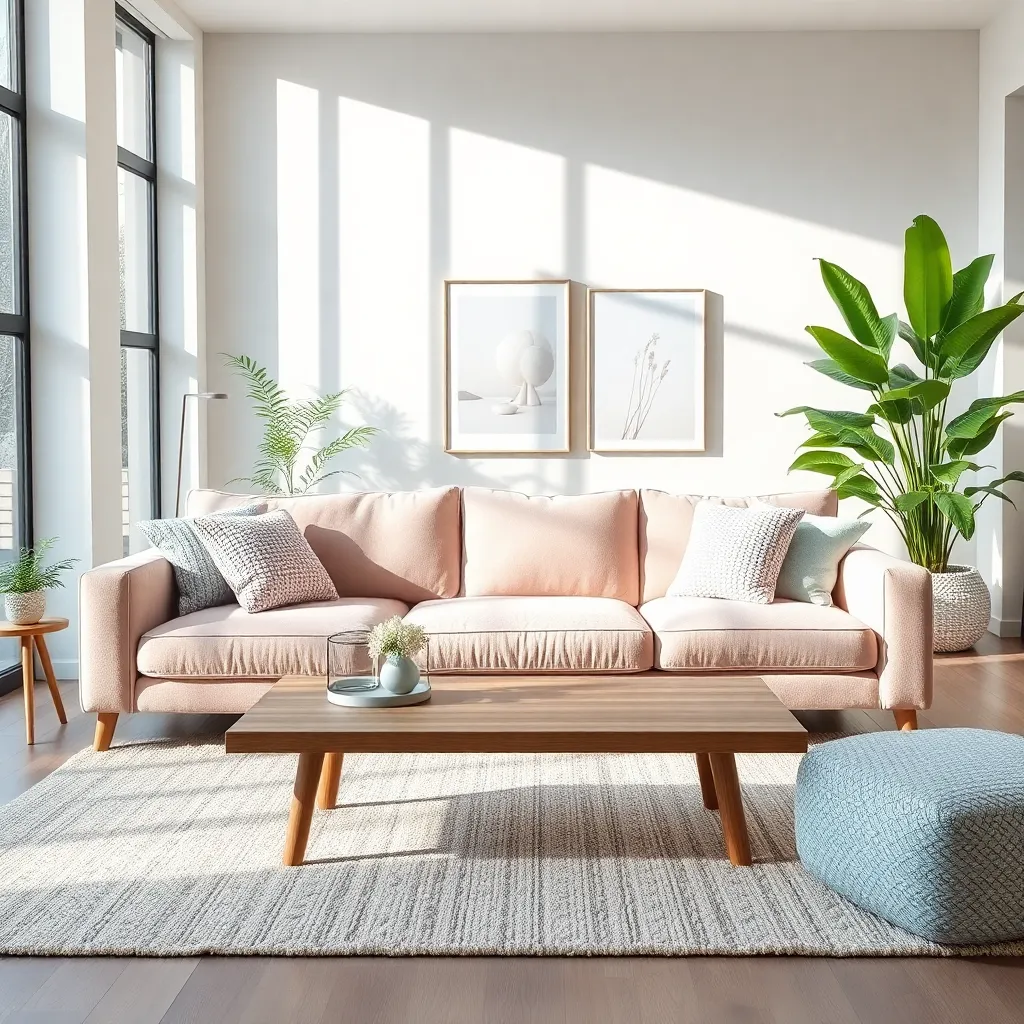
Introducing pastel hues into your Scandinavian home can add a refreshing contrast to the typically neutral palette. Consider incorporating pastel colors through decorative elements like cushions, throws, or wall art to maintain the minimalist aesthetic while adding visual interest.
For a beginner-friendly approach, start with soft pastel accessories such as light blue or blush pink vases and lamps. These can be strategically placed on white or light wood surfaces to create a cohesive look without overwhelming the space.
More experienced decorators might experiment with larger pastel elements, such as a mint green accent wall or a pale yellow sofa. Pair these choices with neutral tones like gray or beige to keep the overall look balanced and sophisticated.
When selecting pastel furniture, opt for pieces with clean lines and simple shapes to stay true to Scandinavian design principles. A pastel-colored armchair or dining chairs can serve as stunning focal points that blend seamlessly with the overall minimalist style.
Showcasing Cozy Hygge Elements
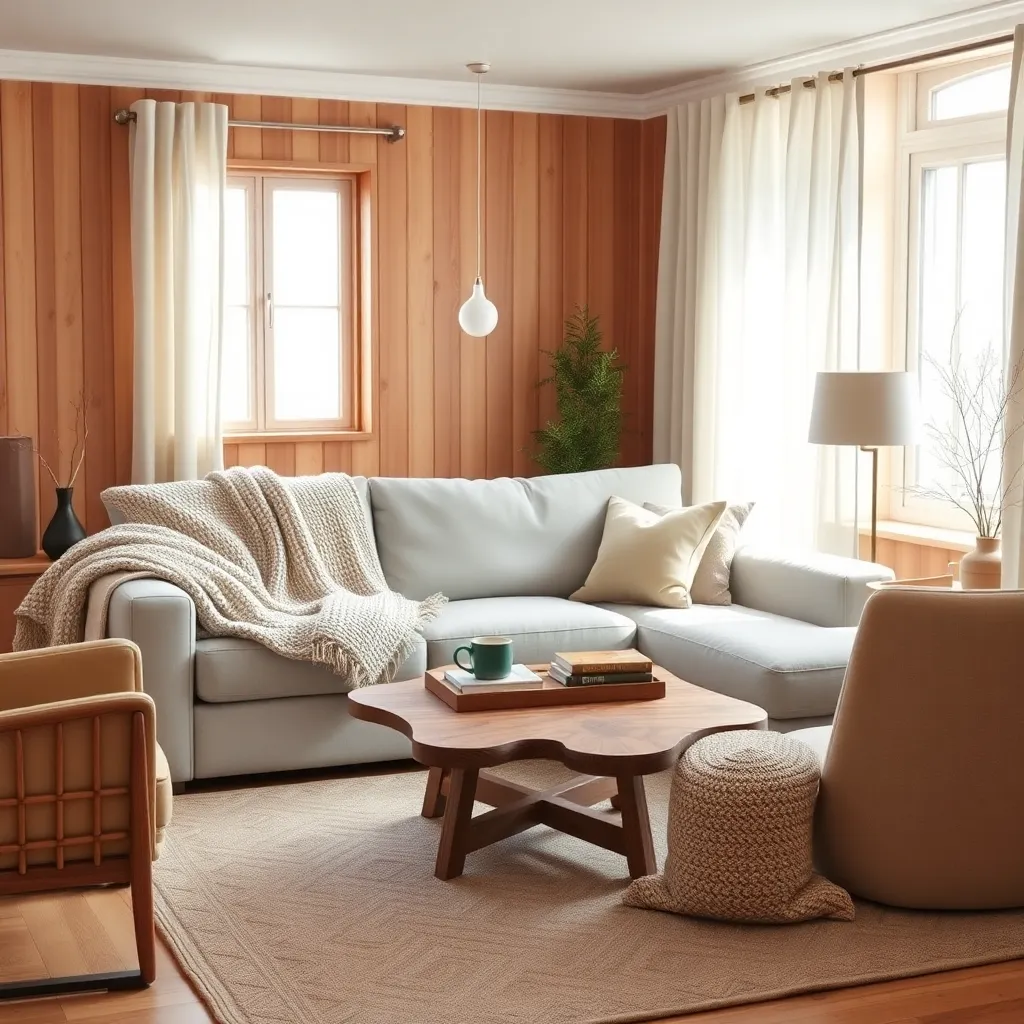
To truly embrace the essence of hygge in your home, focus on creating a space that exudes warmth and comfort. Begin by incorporating textural elements like chunky knit throws and plush cushions in neutral colors such as ivory, beige, or light gray. These items not only provide physical warmth but also add a visual softness that encourages relaxation.
A key aspect of hygge is the use of lighting to set a cozy ambiance. Opt for soft, warm-toned lighting by using lamps with dimmable features or placing candles strategically around the room. This creates an inviting atmosphere perfect for unwinding after a long day, and layering different light sources can enhance this effect further.
Incorporate natural materials to connect the indoors with the calm of nature, a fundamental principle of Scandinavian design. Choose wooden furniture pieces with a light finish to maintain an airy feel; oak and birch are excellent choices. Pair these with elements like a wool rug or a sheepskin throw to enhance both comfort and style.
Advanced decorators can elevate their hygge-inspired space by adding personal touches that reflect their personality. Displaying books, artwork, or handcrafted items on open shelves or coffee tables can create a more intimate and personalized environment. Remember, hygge is about fostering a sense of contentment and well-being, so select items that bring you joy and tranquility.
Crafting Open, Airy Spaces
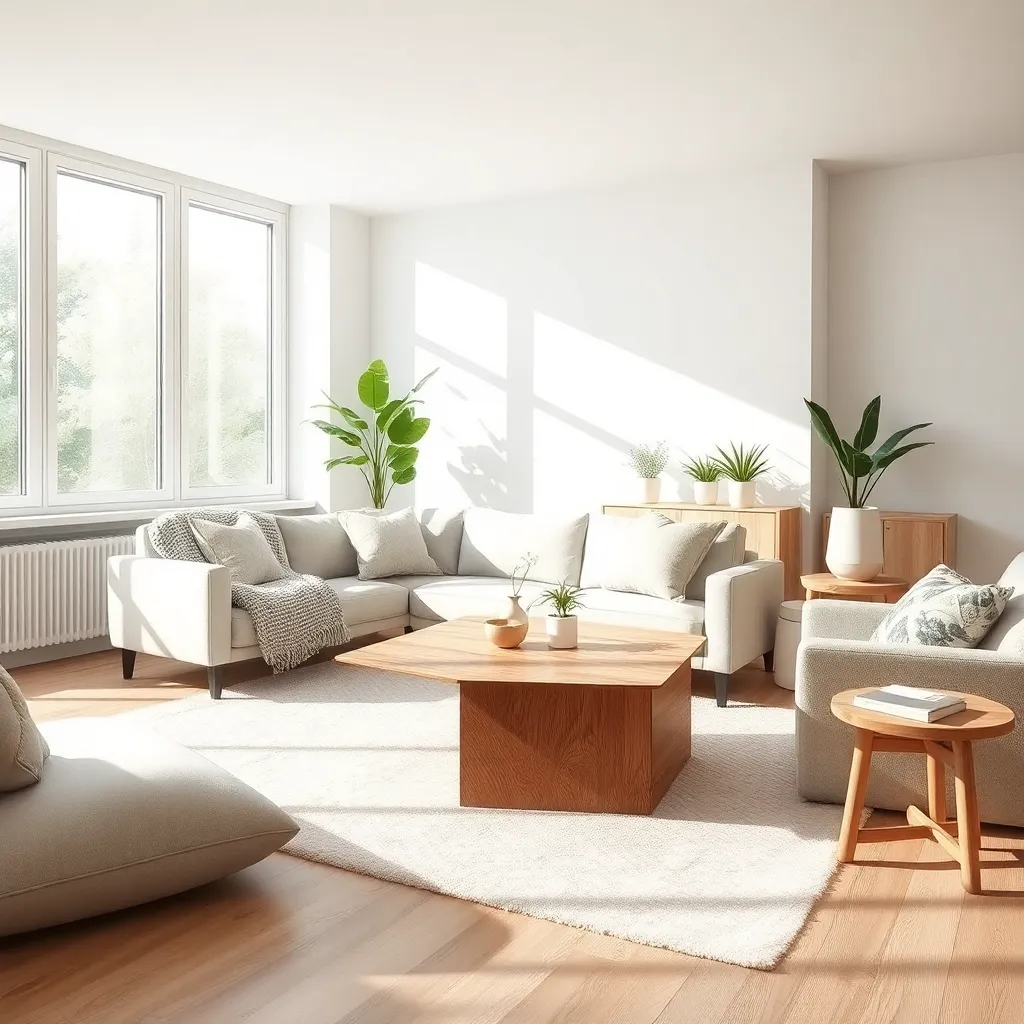
To create open, airy spaces that resonate with the elegant charm of Scandinavian design, focus on minimalist decor and functional furnishings. Opt for furniture pieces with clean lines and light finishes, such as a whitewashed oak coffee table or a light grey sofa, to maintain a sense of spaciousness.
Utilizing a neutral color palette is essential for achieving this look, as it enhances natural light and adds a serene atmosphere. Consider painting walls in soft whites or cool greys and incorporating textiles in muted tones like beige or pale blue to complement the overall aesthetic.
Strategically placing mirrors can amplify the feeling of openness by reflecting light and making the space appear larger. Position a large mirror opposite a window or behind a light fixture to maximize this effect, creating a brighter and more inviting environment.
For those looking to introduce a touch of warmth without sacrificing openness, consider adding wooden accents like birch or ash. Incorporate these materials through furniture legs, shelving units, or picture frames, ensuring they remain in harmony with the overall light color scheme.
Selecting Scandinavian Art Pieces
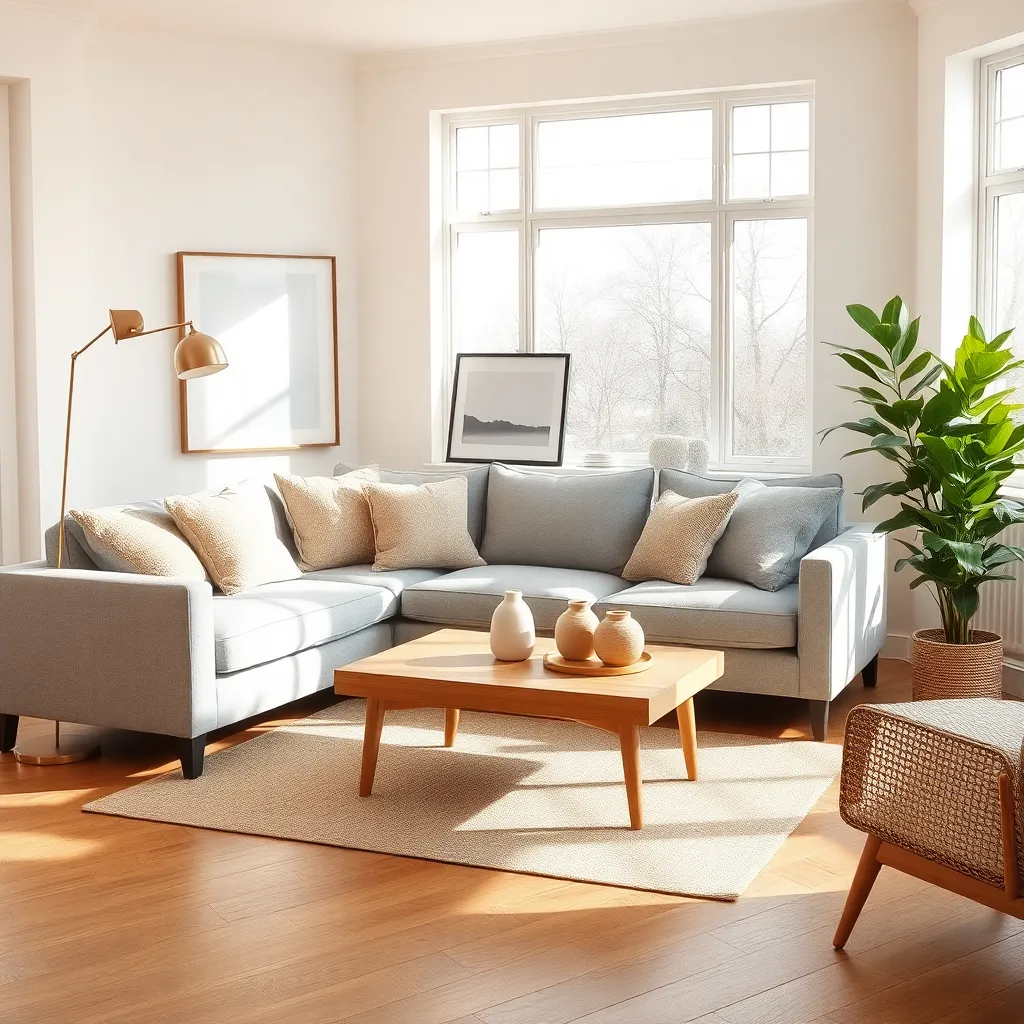
When selecting Scandinavian art pieces, focus on simplicity and functionality. Choose artwork that reflects the clean lines and minimalist aesthetic typical of Scandinavian design.
Consider incorporating pieces with neutral color palettes to maintain the airy feel of your space. Black and white prints or subtle earth tones can enhance the natural light, making your room feel more open and inviting.
For beginners, start with a few key pieces that can serve as focal points in your living area. Consider a large, framed print above the sofa or a series of smaller works arranged in a grid pattern to create visual interest without overwhelming the space.
For those with more experience, experiment with mixed media pieces to add texture and dimension. Combining different materials like wood, metal, or textiles in your art choices can bring warmth to the minimalist backdrop of Scandinavian interiors.
Placement is crucial—ensure that your art pieces are hung at eye level for optimal viewing. If you’re working with a gallery wall, vary the heights slightly to create a more dynamic and engaging display.
Lastly, remember that Scandinavian design often emphasizes a connection to nature. Opt for pieces that depict natural scenes or abstract interpretations of the landscape to maintain harmony with the overall design ethos.
Mixing Modern and Rustic Styles
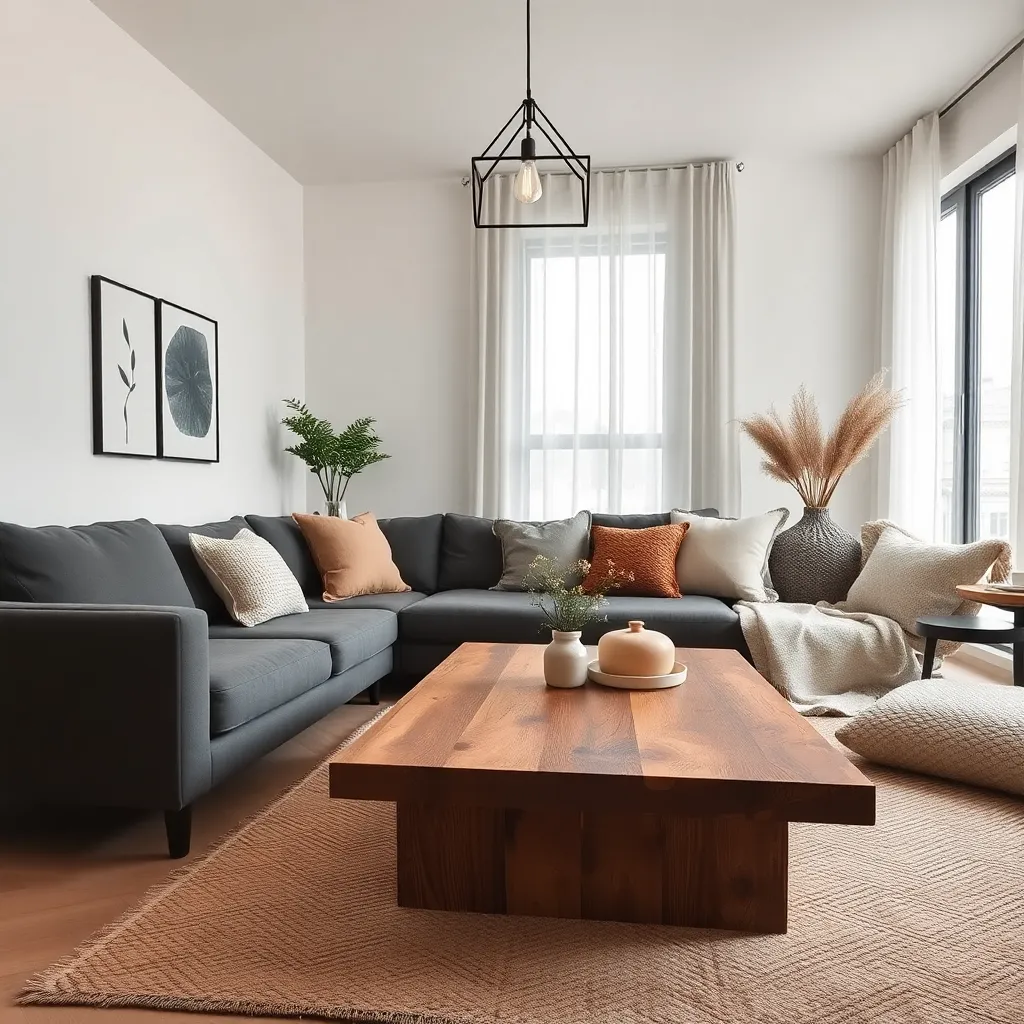
Bringing together modern and rustic styles can create a warm yet sleek atmosphere in your home. Start by selecting neutral color palettes that serve as a common ground between these two styles, such as soft grays, whites, and beiges.
Incorporate modern elements with clean lines to balance the organic textures of rustic pieces. Opt for a minimalist sofa with a streamlined design and pair it with a reclaimed wood coffee table for a striking contrast.
Textural diversity is crucial when blending these styles. Consider using natural materials like leather, wool, and linen in your furnishings, which can add warmth and depth to a modern setting.
For lighting, choose fixtures that combine industrial and contemporary elements. A metal pendant light with an aged finish can provide an elegant touch above a dining table, enhancing the rustic feel while maintaining modern sophistication.
Layering with Soft Textiles
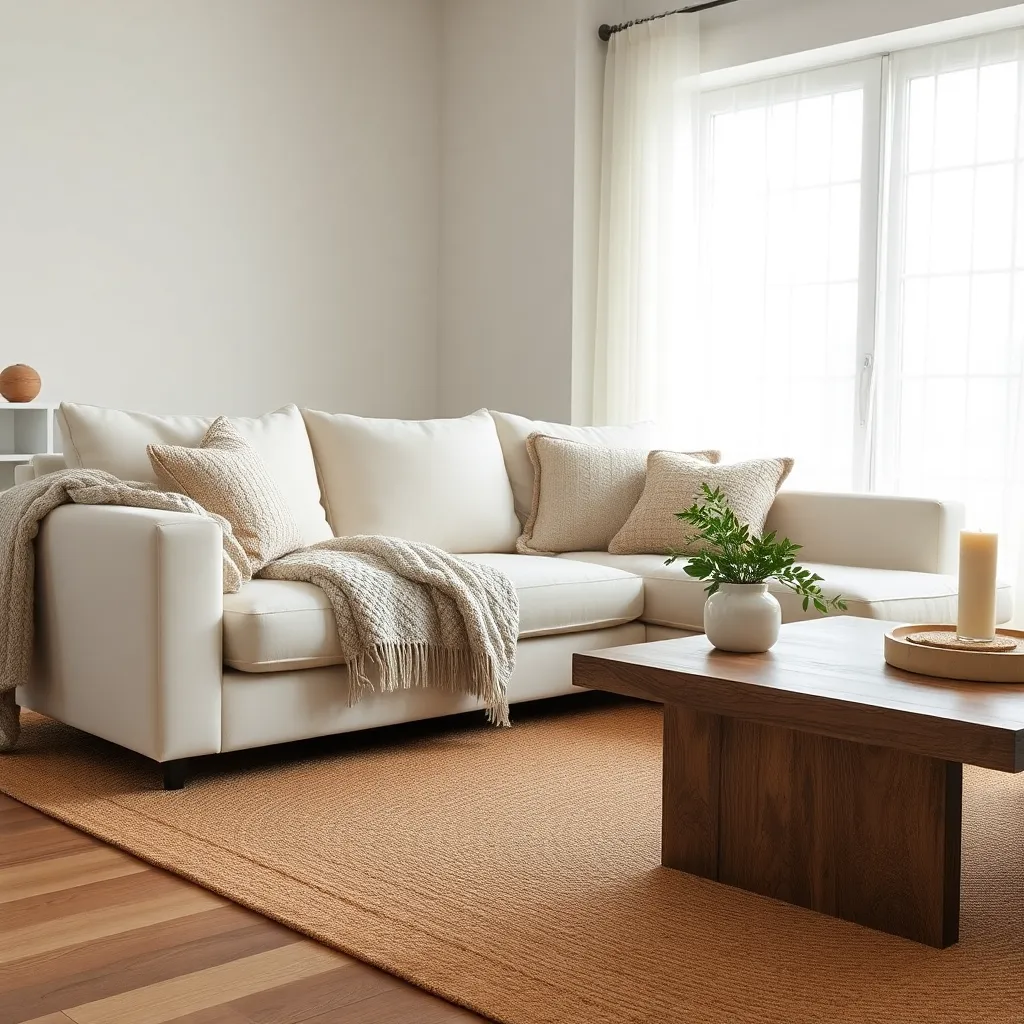
Layering with soft textiles is an integral part of creating a cozy and inviting Scandinavian home. Start by choosing a neutral color palette with shades like soft gray, beige, or muted pastels to maintain the classic Scandinavian aesthetic.
Incorporate a variety of textiles such as throws, cushions, and rugs to add depth and warmth to your space. Select fabrics like wool, linen, and cotton, which not only provide comfort but also align with the natural and minimalist ethos of Scandinavian design.
For furniture, consider a simple, understated sofa or armchair as the foundation. Layer it with a mix of cushions in different sizes and textures, ensuring some have subtle patterns to add visual interest without overwhelming the simplicity.
Advanced decorators can experiment with layering rugs, a technique that adds both texture and dimension. Place a larger, neutral rug as a base and layer a smaller, patterned or textured rug on top to define specific areas such as a reading nook or sitting area.
Achieving Balance and Harmony
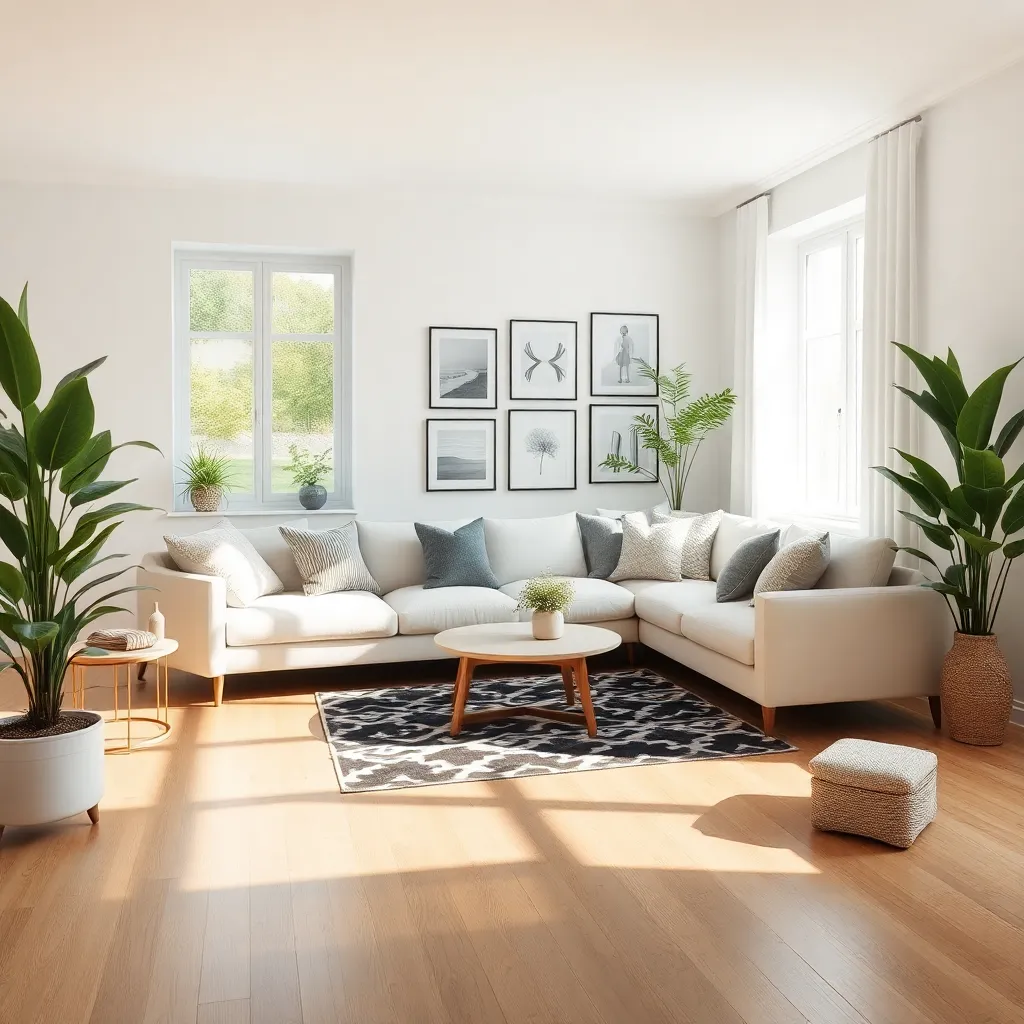
Achieving balance and harmony in a Scandinavian home design involves the thoughtful arrangement of elements to create a serene environment. Begin by selecting furniture pieces that are not only functional but also complement each other in size and style. Opt for a mix of different textures to add depth, such as pairing a sleek leather sofa with a soft woolen throw.
Color schemes play a crucial role in establishing harmony within a space—consider using a neutral palette with whites, grays, and beiges as your foundation. These colors create a calming backdrop that allows other elements to shine. To add interest, incorporate subtle accents of muted pastels or deeper shades through accessories like cushions or artwork.
Furniture placement should encourage flow and functionality, ensuring that each piece has a purpose and doesn’t overcrowd the room. Arrange seating in a way that promotes conversation, like facing sofas and chairs towards each other. This approach not only enhances social interaction but also maintains visual balance by distributing weight evenly across the space.
For a more advanced touch, consider the use of symmetry in your design. Symmetrical arrangements often bring a sense of order and tranquility; for instance, placing matching lamps on either side of a sofa. If you prefer a more eclectic look, balance can still be achieved by pairing contrasting elements that share a common theme, such as different shaped chairs around a dining table that all have a natural wood finish.
Conclusion: Growing Success with These Plants
As we explored the ’14 Elegant Chic Scandinavian Home Designs,’ each design subtly mirrored a key relationship concept: simplicity, balance, open communication, trust, mutual respect, shared goals, adaptability, warmth, creativity, individuality, harmony, sustainability, mindfulness, and growth. These principles, much like the serene beauty of Scandinavian design, form the foundation of thriving relationships. Now, take a moment to reflect on these tenets and choose one to nurture in your relationship today. Perhaps you could simplify communication with your partner or embrace creativity in addressing conflicts.
Empower your relationship journey by bookmarking this article. Let it serve as a gentle reminder of the elegance that thoughtful design and intentional relationships can bring to your life. As you continue to build on these foundational concepts, envision a future where your relationships are as enduring and fulfilling as the Scandinavian designs we admire. Remember, the art of a successful relationship is ever-evolving, and with each step you take, you’re investing in a joyous and harmonious partnership. Save this guide, revisit it often, and watch your relationships flourish with intentionality and grace.
